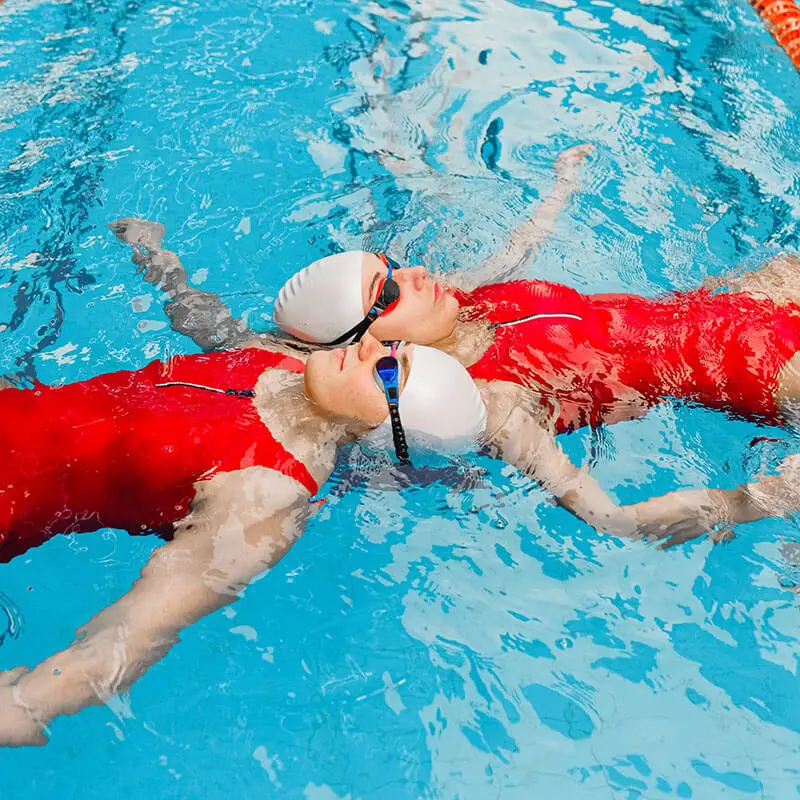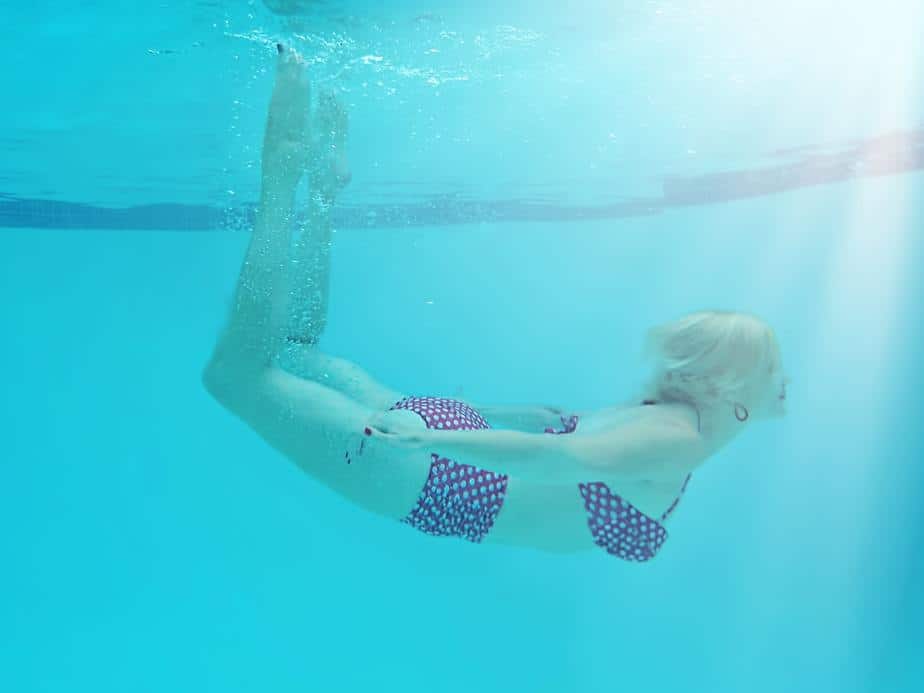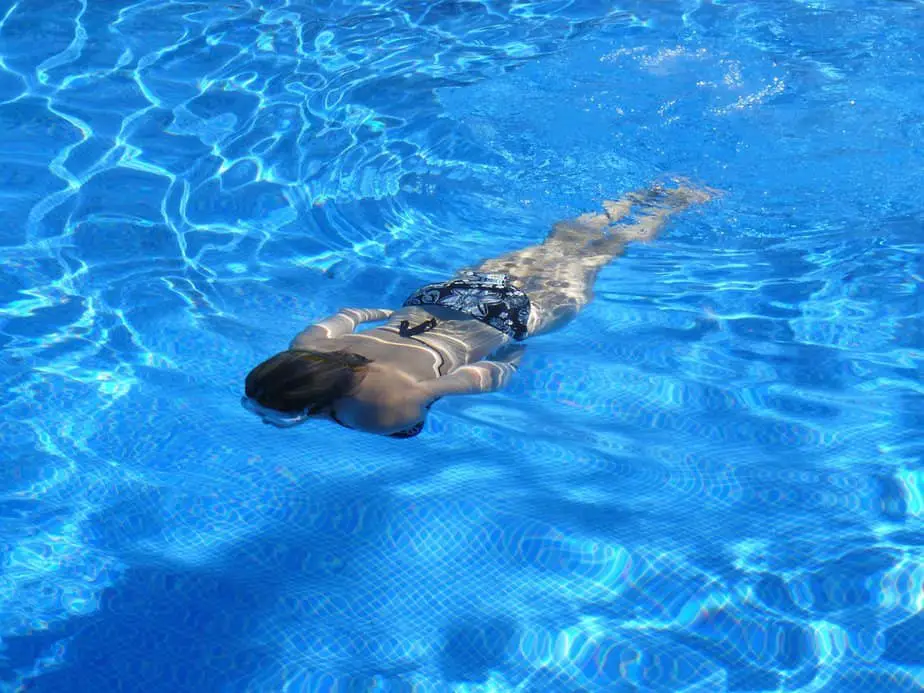Have you ever struggled to stay underwater while swimming, only to find yourself floating back up to the surface? If so, you’re not alone.
If you want to stay underwater in order to:
- Outsmart others in a pool game
- Pick up something you dropped
- Get a closer look at something interesting while snorkeling
- Swim the length of the pool underwater
- And more!
Then you’re in the right place! Staying underwater can be a bit tricky, but with the right techniques and tips, it is definitely achievable.
In this article, we’ll explore some proven methods that will help you stay underwater without floating back up. From proper breathing techniques to adjusting your body position, these tips will come in handy for both casual swimmers and underwater enthusiasts alike. So, stay tuned and get ready to take your underwater swimming skills to new depths!
Understanding Buoyancy

In this section, we’ll explore the concept of buoyancy and its impact on staying underwater without floating back up. We’ll discuss important concepts like Archimedes’ Principle and the factors affecting buoyancy.
Archimedes’ Principle
Archimedes’ Principle is a fundamental concept in understanding buoyancy. It states that the upward buoyant force acting on an object submerged in a fluid is equal to the weight of the fluid displaced by the object. In simpler terms, this means that objects appear lighter in water due to the upwards force exerted by the fluid.
For swimmers, this principle explains why we float or sink in water. If the water’s buoyant force is greater than our body weight, we’ll float. Conversely, if our body weight is greater than the buoyant force, we’ll sink. Understanding this principle is essential for learning how to stay underwater without floating back up.
Factors Affecting Buoyancy
Several factors affect a person’s buoyancy while swimming underwater. These factors play a critical role in determining whether or not you float back up to the surface. Some of these factors include:
- Body composition: People with higher body fat percentages tend to float more easily because fat is less dense than water. On the other hand, leaner individuals with a higher muscle-to-fat ratio might find it easier to stay submerged.
- Water density: The density of water affects buoyancy, as saltwater is denser than freshwater. This means that floating is generally easier in saltwater, while staying submerged might be easier in freshwater settings.
- Exhaling air: Air is positively buoyant. Thus, breathing out air from your lungs is the easiest way to stop floating upward when swimming underwater. Doing so decreases the amount of air in your lungs, reducing your overall buoyancy which causes you to sink.
- Use of weights: The human body is about as dense as water, so altering your density by wearing a weight belt or using other weighted accessories can counteract the buoyant force and help you remain submerged.
By understanding and managing these factors, you can improve your ability to stay underwater without floating back up.
Out of all of these factors, exhaling air arguably makes the greatest impact on one’s buoyancy. (As do dive weights, but most people don’t swim with them).
How to Sink in Water
Mastering proper breathing techniques is essential to staying underwater without floating back up. Check out the video below to see what you can accomplish by doing so.
How do some swimmers sink to the bottom of the pool effortlessly? Understand that the more air you have in your lungs, the more buoyant your body will be.
The way to counteract this is to exhale slowly while underwater, reducing the amount of air in your lungs and helping you stay submerged.
To practice exhaling slowly underwater, follow these steps:
- Begin by taking a few deep, controlled breaths to fill your lungs.
- Swim down to the desired depth before exhaling.
- Slowly release the air from your lungs through your nose or mouth.
- As you release air, you should feel your body become less buoyant and easier to keep underwater.
I think it goes without saying that intentionally exhaling air while you’re underwater is extremely risky. The section below goes into these risks in more detail.
The Risks of Holding Your Breath Underwater

Holding your breath underwater can be a fun and exhilarating experience, but it can also be dangerous. The risk is amplified if you intentionally exhale some of your breath just so you don’t float back up.
Below are some of the risks associated with holding your breath underwater:
- Hypoxia: When you hold your breath, the oxygen in your lungs is gradually depleted. This can lead to a condition called hypoxia, which is characterized by a lack of oxygen in the body. Hypoxia can cause dizziness, confusion, and even loss of consciousness.
- Blackouts: When you hold your breath, the level of carbon dioxide in your blood increases. This can cause you to feel lightheaded and can even lead to a blackout (loss of consciousness).
- Drowning: If you are underwater and you lose consciousness due to hypoxia or a blackout, you will almost certainly drown without some kind of intervention.
Body Position and Movements

Proper body position and movements are crucial to stay underwater without floating back up. Here, we’ll discuss two key aspects: the streamlined position and efficient kicking.
Streamlined Position
A streamlined position allows you to move effortlessly underwater and reduces buoyancy. To achieve this, follow these steps:
- Align your body in a straight line from head to toe.
- Extend your arms above your head, with your biceps touching your ears.
- Stack your hands one on top of the other, with your fingers pointing forward.
- Press your chest and stomach slightly downward to maintain a stable position.
This position helps to minimize water resistance and avoid floating up as you swim.
Efficient Kicking
An efficient kicking technique is necessary for swimming underwater without floating up. There are a few kicks that work well:
Flutter kick:
Perform quick, small kicks with your legs straight and close together. This kick generates the least amount of lift and is ideal for staying underwater without floating up. It is important not to bend your knees while performing the flutter kick.
Dolphin kick:
Perform an undulating motion with your whole body to propel yourself forward. This kick requires a strong core and can help maintain a lower position in the water.
Practice these kicks to enhance your ability to stay underwater without floating up. Remember, a controlled and less buoyant body position is key.
Wear a Weight Belt

One effective method to stay underwater without floating back up is using a weight belt. Weight belts are commonly used by free divers and scuba divers to counteract their natural buoyancy, allowing them to stay submerged for longer periods of time.
A good weight belt should be comfortable, adjustable, and made of a durable material. You can choose different weight options based on your personal preference and the level of buoyancy you want to achieve. For beginners, it’s recommended to start with smaller weights and gradually increase as needed.
When using a weight belt, it’s important to follow some general guidelines for safety:
- Ensure the belt fits snugly around your waist without being too tight.
- Make sure the weights are evenly distributed, with most balanced on your hips, not on your back or kidneys.
- First practice in a safe and shallow environment such as a pool or a controlled diving area before venturing into open water.
By incorporating a weight belt into your underwater swimming routine, you can effectively stay submerged without floating back up, allowing you to explore and enjoy the underwater world with greater ease.
Safety and Precautions
While learning how to stay underwater without floating back up, it is essential to prioritize safety and implement precautions.
Buddy System
Always practice swimming techniques, like staying underwater, with a trusted friend or family member. The American Red Cross emphasizes the importance of recognizing signs of someone in trouble, rescuing without putting oneself in danger, and calling for help if necessary. The buddy system helps ensure someone is present to assist if you experience difficulties.
Surface Safely
To avoid panicking when resurfacing, remember these crucial tips:
- Never take too large a breath before diving; this will increase your buoyancy and make staying underwater more challenging.
- Gradually exhale as you surface to allow your lungs to adjust and relieve pressure.
- If caught in a strong current or undertow, remain calm and float or tread water on your back.
- Know the number to reach a lifeguard or emergency services, if necessary.
Staying safe underwater requires practice, understanding your own limitations, and following guidelines from reliable sources like the American Red Cross and Healthline. By using the buddy system and practicing surface techniques, you can enjoy your underwater adventures with confidence and safety.

